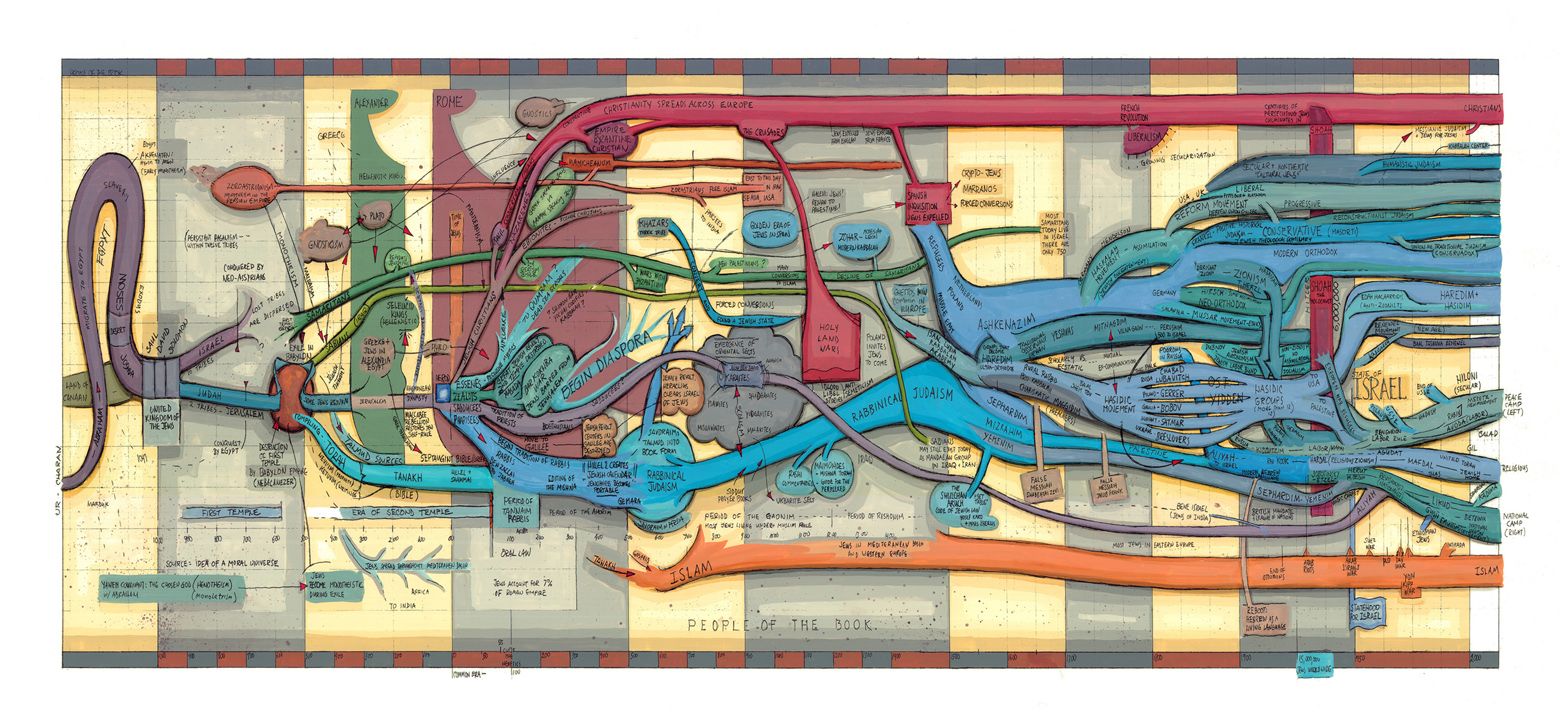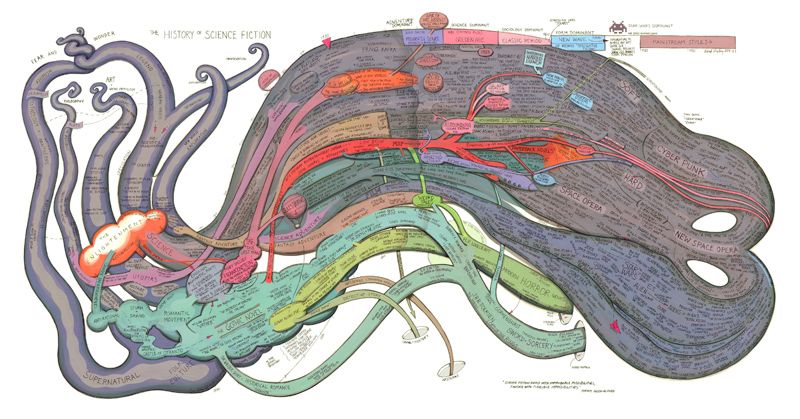 |
| Ward Shelley "People of the Book" 2012 Oil and toner on mylar 36 x 75.5 inches |
"[Shelley's] striking [...] paintings anatomize the development of intellectual and social streams within the humanities. The artist describes them as 'attempts to use real information to depict our understandings of how things evolve and relate to one another, and how this develops over time.'Aesthetically speaking, I liked every piece in the show, but the most edifying works were those that considered "significant, sweeping lineages," and I concluded the write-up with the hope that Shelley's lens would broaden.
In spirit as well as in appearance, then, Shelley's paintings are cousin to phylogenetic trees, the taxonomic diagrams that biologists use to denote evolutionary relationships among species. But, though Shelley's genealogies look like mappings of biological exuberance, the subjects of his brightly colored, illustrative works are not so scientific: Frank Zappa; Beat Generation writers; nodes of postmodern philosophy; modern art movements."
It has. Most of the narrative timelines included in "Unreliable Narrator," Shelley's current exhibition at Pierogi, are expansive and pregnant with contemporary significance: "People of the Book" and "House Divided" trace the complicated lives of two of the three great Abrahamic religions, Judaism and Christianity; "Just Cause v.1" details American wars and their impetus; "Teenagers" traces the preoccupations and identities of generations of American teens; and "History of Science Fiction" is, well, a history of science fiction. The anthropology of religion is one of my favorite subjects, and I recently dipped my toes into just war theory, so I admit some personal bias, but there is plenty here for all viewers.
Shelley is a smart and articulate artist, and I thought it worth including some of the notes he provided for the show.
"As actors in the world, we need a world view, and a world view requires some construction. Narratives are what we construct - they are the basic building blocks for organizing our outlook and interpreting the world. For a narrative to be useful, you have to commit to it, you have to believe. [...]I believe that Shelley's ongoing investigation of the dialectical relationship between life and narrative is something special, and I'm very disappointed that I won't get a chance to see this show.
Believers are often clustered with others that share their convictions. The work in this exhibition samples a variety of ways beliefs manifest. Inevitably, we must look at religion and politics, so the inclusion of work about two of the world's great religions seemed appropriate and necessary. Likewise, patriotism must go under the glass, and we examine the rationale for American wars. Beliefs form groups in less obvious ways. The concept of teenagers as a distinct category of human beings didn't really exist until very modern times (the word itself was coined after World War II), but has become an article of faith. Catalyzed by this distinction, teens themselves created a fascinating array of creeds which we chart in 'Teenagers.'
The relationship of science fiction to belief is ambiguous but in some way essential. Science fiction deals with improbable possibilities. It has that in common with religion and patriotism, except SF is much more candid about it."
 |
| Ward Shelley "History of Science Fiction" 2010-2011 Oil and toner on mylar 28.25 x 53.75 inches |
Image credits: Ward Shelley images, courtesy the artist

No comments:
Post a Comment